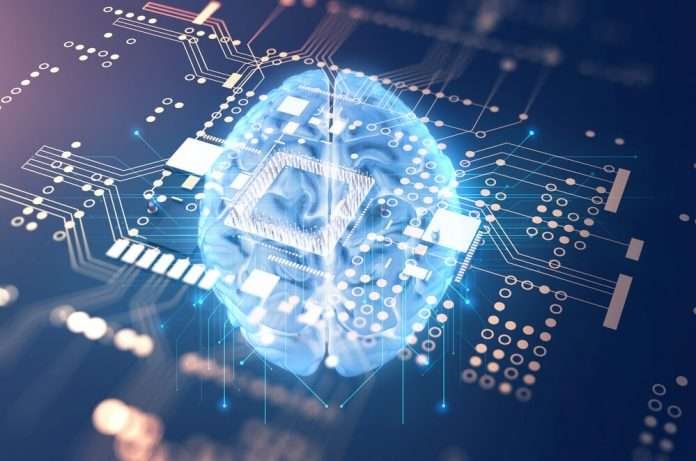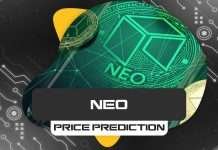
Blockchain and artificial intelligence are two of the most disruptive and interesting technologies that are a part of the current digital revolution.
Touching and infiltrating every industry from cars to healthcare, the question is, what happens when they stop working off their own steam and instead join forces?
Let us explore further what is being dubbed ‘the perfect synergy’- blockchain and artificial intelligence.
What Is AI?
The artificial intelligence industry is fast-paced and lucrative. According to PwC, it is on track to contribute $13.7 trillion to the world’s economy by 2030. As a result of this, the global GDP is set to rise by a whopping 13%, but what exactly is AI?
AI was first imagined as a possible concept back in the 1950s – before this point, it had been something only found in science fiction and no one thought that it could be real. Then, McCarthy and Minsky defined artificial intelligence in a way that could be comprehended by others in the field – they described it as any programme or machine that is capable of carrying out a task that would require intelligence to complete if a human was carrying it out.
This is a rather broad definition and we often see arguments amongst professionals in the field as to whether a particular thing qualifies as AI or not.
AI can be used for tasks that involve planning, learning, problem-solving, knowledge acquisition and representation, motion, perception, manipulation, analysis, and even reasoning. They are also supposed to possess a modicum of social intelligence and creativity, but as of yet, they do not possess the ability to think entirely for themselves.
Examples of AI that we use in our everyday lives include Siri, Alexa, Facebook’s ability to recognise someone in a photo we upload, and even programmes our banks use to detect credit card fraud.
What Is Blockchain?
Blockchain is the underlying technology that powers a myriad of cryptocurrencies and applications. It was invented back in 2008 with the sole and primary purpose of powering Bitcoin, but now, over a decade later, we are beginning to understand its full potential.
This bit of technology allows data and digital information to be distributed across multiple computers and to multiple individuals in real time. This information cannot be copied and it cannot be edited or recalled once it has been added to the blockchain – this means it can only have one owner and it is completely immutable to fraud.
Think of it like a large spreadsheet on Google Drive – one that is shared between an infinite number of other users. Each input is instantly replicated across all nodes of the network, but the difference is that what you enter cannot be changed or edited once you press send.
All information is constantly reconciled into the database which means that they are all public and verifiable. As there is no one central location, it is considerably harder to hack because the information exists across many places all at the same time.
Read more about Blockchain Technology.
What Happens When Blockchain and AI Meet?
In the most simple of terms, blockchain is concerned with keeping accurate records, authenticating transactions, and executing specific features. AI assists in decision making, assessing patterns, gathering data, analysing data, an ultimately engineering autonomous interactions.
Both AI and blockchain share some particular characteristics that will help to create a seamless way of interacting in the not-so-distant future.
Over the last few years, both bits of technology have significantly disrupted and transformed a range of industries, but as of yet, they have not worked together in a widespread manner. So what happens when they intersect? Let us find out!
Increased Security
There is an incredibly big need for high security when you are dealing with high-value transactions over a blockchain network. Remember, once a cryptocurrency disappears or is lots, you cannot get it back – in the world of crypto, there is no such thing as a reversal or a refund.
When it comes to artificial intelligence, the fact that the machines are completely autonomous means that they also have to have a high level of security to help avoid the chances of a catastrophic occurrence.
If an AI solution is created and implemented on a centralised platform, it is important that the security and the integrity of the machine learning algorithms are maintained. It should also be certain that the interface can provide a reliable representation of AI output a model which developers must create blindly.
Data Sharing
By using a decentralised database, users can increase the importance and efficiency of data sharing between multiple clients over one shared network. The use of AI relies heavily on using Big Data and of course, data sharing.
With more data available for analysis, the assessments and the subsequent predictions of AI will be more correct and any algorithms that are generated will be more reliable.
Borderless Business
Blockchain technology helps us create a world where there are no borders, and of course, AI will not work well without the use of well-analysed datasets. These need to be created by both high profile and high paid engineers and also lower paid workers such as unbanked individuals from developing countries.
These people mark up the data for machine learning and as many do not have access to bank accounts it is often a good idea to pay them in cryptocurrency. Fiat currencies often have restrictions and can cause legal and banking implications, crypto, however, does not.
This means that their wages can be protected from sometimes volatile exchange rates and issues such as bank charges and fees. On a blockchain-based platform, a developer can set a task, specific a price and anyone that is available and has the correct skill set can undertake it, regardless of their location.
Trust Is Needed
When it comes to the acceptance and advancement of any kind of technology, the trust levels it enjoys are of an utmost importance and AI and blockchain are no exception. At the moment, trust levels are not particularly high when it comes to blockchain technology, whilst AI does enjoy a higher level of trust.
In fact, recent studies have shown that not only do people trust AI and chatbots, but many people do not even realise that they are interacting with a machine or computer programme, as opposed to a human being.

Source: PwC
Increased Accessibility
By combining blockchain and AI, we can significantly simplify the collaboration between crowd workers. In lots of developing countries, it can be very challenging to open a bank account and making payments without a fee, in fiat currencies can be even more difficult. If someone can earn in cryptocurrencies, this can offer a solution as it only takes a moment to register and Ethereum or Bitcoin wallet.
In short, by using blockchain technology we can quickly speed up the adoption of AI across the world by helping to expand its community, creating a bigger and more involved workforce, and making datasets available for small companies and individuals, not just the tech giants such as Tesla, Apple, and Microsoft.
Blockchain has the potential to break down the barriers that currently stand in the way of AI development and this could lead to greater efficiency and more openness at a much lower cost.
An Open Market For Data
The advancement of AI technology hinges a lot on the availability of data from a large range of sources. Big, international tech giants such as Facebook, Amazon, and Google all have access to incredible amounts of data which can be invaluable for a wide range of AI processes. This sort of data in this sort of quantity is not readily available on the open market.
Blockchain has the ability to tackle this issue head-on and to introduce the idea of p2p connections. As the platform is a totally open, distributed ledger, the data on it is readily accessible to everyone who is using the network.
This means that the days of data oligopoly are soon to be far behind us and a new era for open and free data is upon us.
More Reliable AI Predictions
One of the core principles of IT systems is called GIGO and it stands for garbage in, garbage out. The sector of AI is very dependent on large streams of data and the problem is always present that some individuals or companies may interfere with or tamper with the results and outcomes. This can have disastrous consequences for the analysis that is based on the data and the people that use it.
Through the creation of segmented verified databases, different models can be built and implemented upon a dataset that has been verified. This means that any faults or irregularities in the data will be noted and time will not be wasted on data that cannot be verified.
This also means a reduction in the cumbersome process of troubleshooting and identifying abnormal datasets because the stream of data is available in smaller segments.
As blockchain is synonymous with immutability and immunity to tampering, this means that every bit of data is completely traceable and auditable.
A Huge Payoff
At the time of writing, the question remains as to who is able to put the best AI/machine learning solution on top of a shared, open, blockchain-based data layer. Whoever is able to do this, first, is able to gain some significant competitors advantage and they will be set to become a market leader.
Whilst both sectors are burgeoning and fledgeling in many respects, how they will develop over the next year is set to change the way that we do pretty much everything.
Whilst solid use cases of collaborations between the two are yet to be seen, it seems that we are not far off. There is no doubt that there are exciting times ahead when it comes to discovering how two of the world’s most exciting technologies will fuse together to change the way that we do things.



![Bitcoin Buyer Review of Official Website [2022] bitcoin buyer review featured image](https://bitemycoin.com/wp-content/uploads/2022/04/bitcoin-buyer-review-featured-218x150.jpg)
![Bitcoin Digital | Official Website Review [2022] bitcoin digital review featured](https://bitemycoin.com/wp-content/uploads/2022/04/bitcoin-digital-featured-218x150.jpg)



